
One of Northern Iceland’s least visited parts, the Vatnsnes Peninsula holds many well-kept secrets that only recently, due to the overall surge in tourism, get more attention from foreign travelers. Towering above the Húnaflói Bay, the oddly shaped rock of Hvitserkur has inspired local fables, captivated the minds of intrepid travelers and more recently, has also become a pilgrimage site for dedicated nature photographers.
Like many similar sites across Iceland, Hvitserkur is best accessible by car. The parking area is located roughly 26 kilometers from the country’s ring road, entailing a 30-minute bumpy drive on a gravel road.
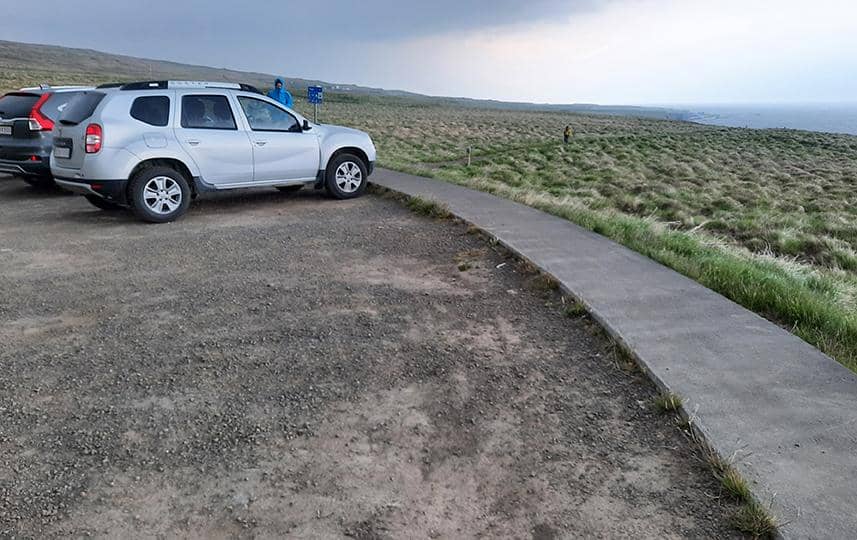
photography by: Omri Westmark
A modest blue sign, a short distance away from the parking, indicates the way to the main lookout, which traverses an open grassland. There is another trail as well, albeit it leads directly into the beach. It is worth mentioning that the well-marked pathway sits on a promontory that is higher than the shore itself.
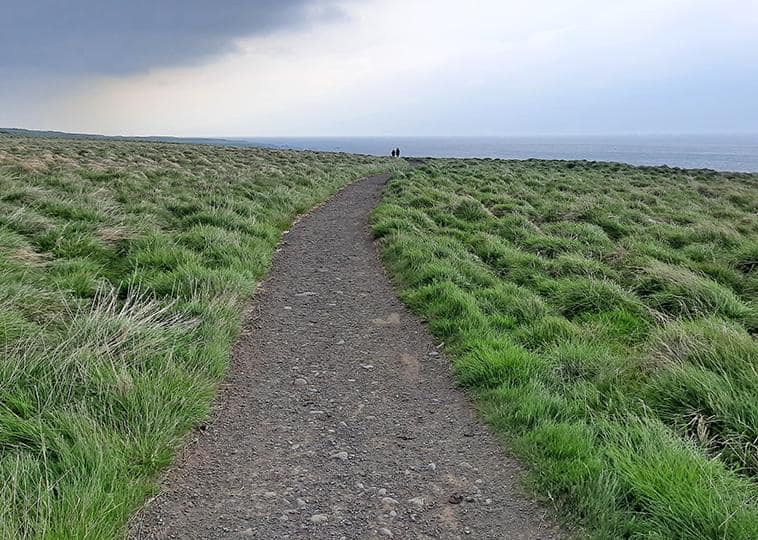
photography by: Omri Westmark
Following a 5–10 minute hike, you’ll reach the uphill wooden observatory deck, where visitors are greeted for the first time by the incredible crag that is looming at the bay’s waters.
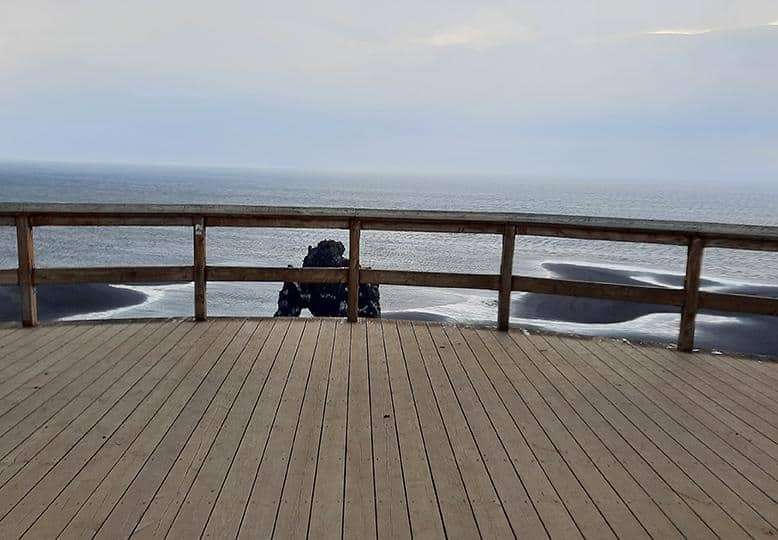
photography by: Omri Westmark
If you wish to have a closer glimpse of the rock formation, then you’ll have to carefully descend through a somewhat challenging trail which more than often requires the use of all four limbs.
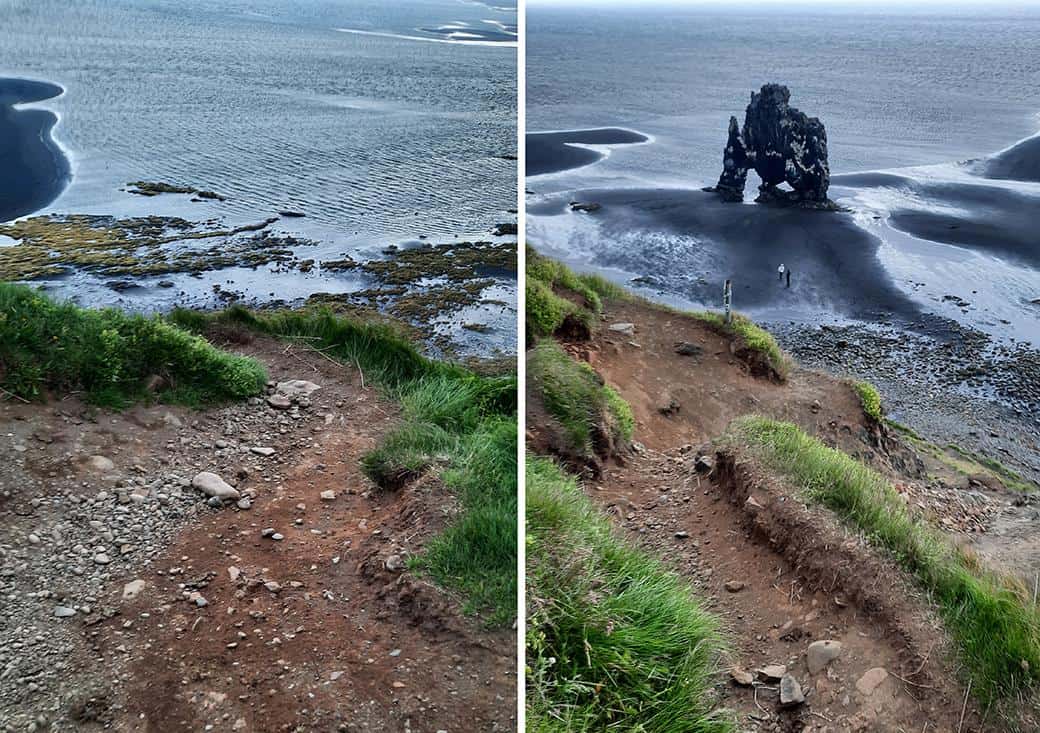
photography by: Omri Westmark
Formed across millennia of erosion by the surrounding choppy waters, Hvitserkur was once merely a part of a larger volcanic plug. As the ocean battered the basalt rock over a long period of time, its outer parts ultimately collapsed, leaving a 15-meter-tall sea stack as the only remnant.
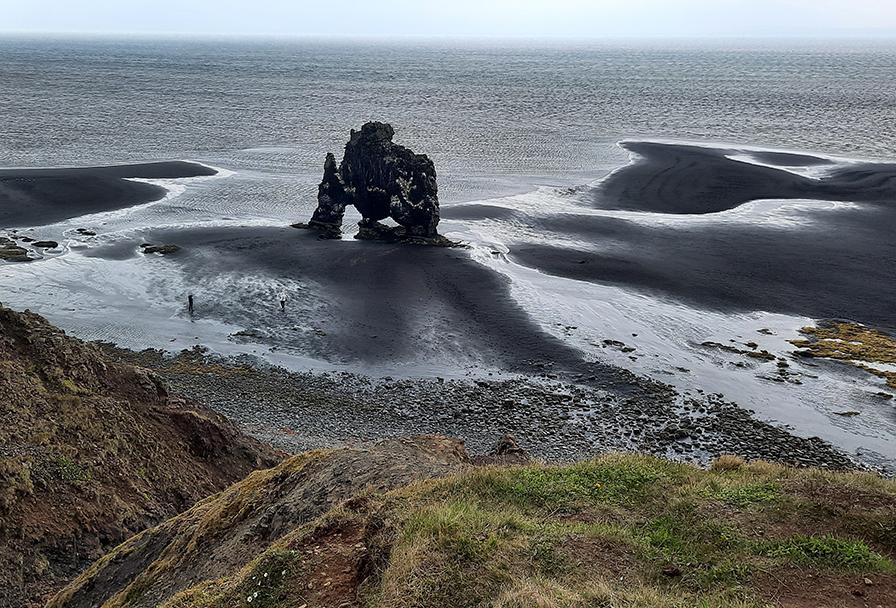
photography by: Omri Westmark
Up until quite recently, it seems as if the extant rock is about to face the same fate, however, local villagers from the nearby rural communities resourcefully reinforced the crag with concrete foundations, and thus it managed to dodge the impending collapse, at least for the mean time.

photography by: Omri Westmark
In sheer contrast to the scientific explanation, legend has it that the rock is actually a petrified troll. According to a local tale, an outraged troll was heading to the close-by Þingeyraklaustur Monastery with the aim of wreaking havoc. Distracted by his own fury, the troll didn’t make it on time to his cave and so, he was exposed to sunlight that instantly turned him into a giant stone, frozen in time.
Apparently, the tale was inspired by the local resistance of Icelanders to the Christianization of the country that took place around 1000 AD. Prior to the Norwegian invasion and colonization of the island, Icelanders practiced the Old Norse Gods religion and since for some of them, the inevitable transition to Christianity was unacceptable, they zealously refused to change their faith. Despite its eventual demise, some elements of Iceland’s ancient religion are still very much a part of the local culture and traditions to these days.

photography by: Omri Westmark
Alongside the troll myth, many claim that the monolith bears an uncanny resemblance to a drinking dragon, whilst others vision a rhino, dinosaur, or even an elephant. As it is the case with Rorschach test, perhaps it is up for you to determine exactly what the rock is reminiscent of.
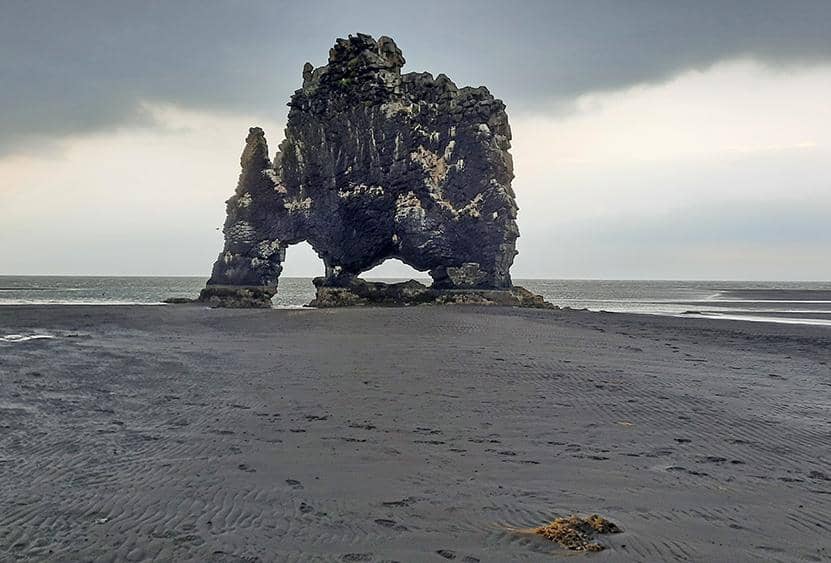
photography by: Omri Westmark
Interestingly, its name, Hvitserkur, literally means in Icelandic “white shirt”, a reference to its multiple white splotches of guano, the result of accumulated bird droppings over time.
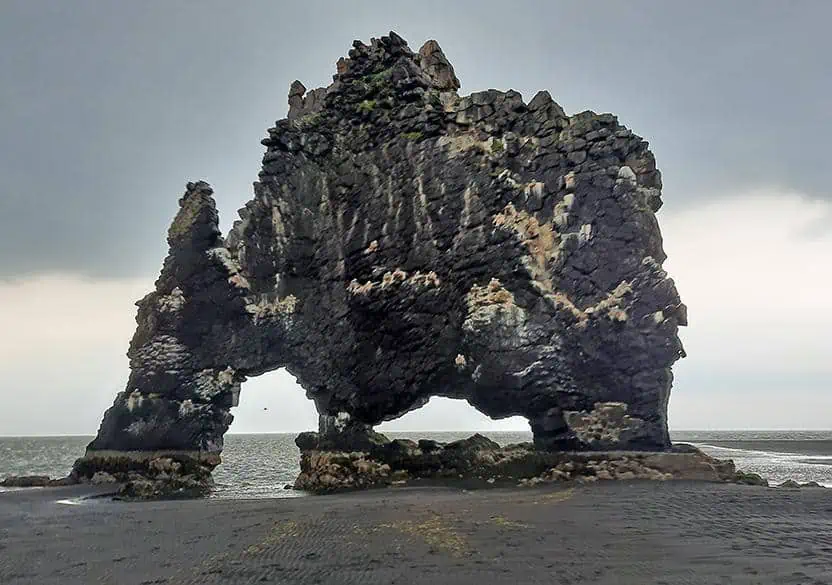
photography by: Omri Westmark
Since the basalt rock provides a refuge from the rough sea as well as potential predators, it serves as a nesting and resting platform for dozens of birds, particularly gulls, fulmars and shags.
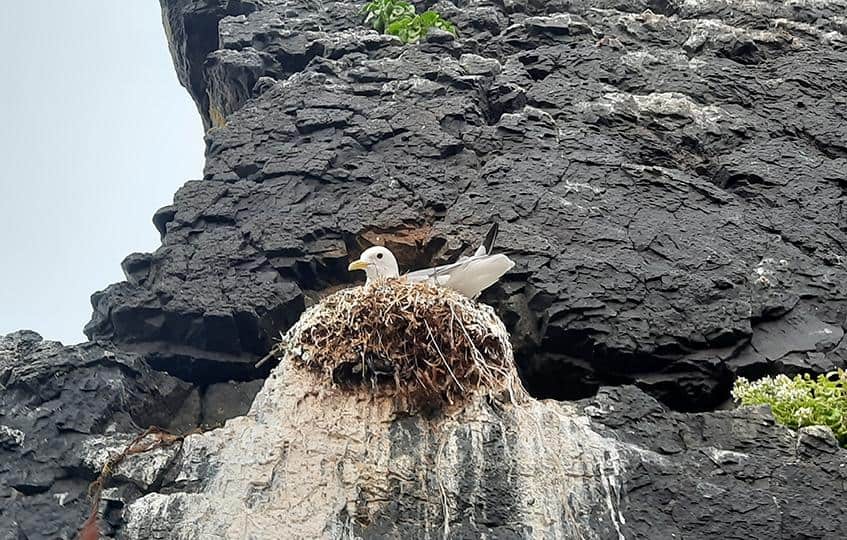
photography by: Omri Westmark
Pierced by the powerful waves, the sea stack has two holes, an arch-shaped opening and a narrow-elongated crack, from where one can gaze at the bay.
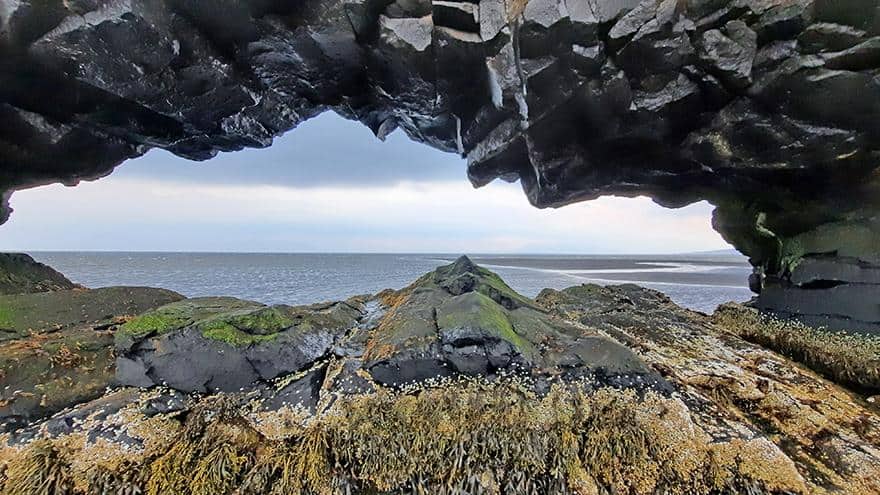
photography by: Omri Westmark
The rock itself and its immediate surroundings are accessible only during low-tide, whereas at the rest of time, it is entirely engulfed by water, a breathtaking spectacle by its own right, but a one that can only be enjoyed from the site’s aforementioned lookout.
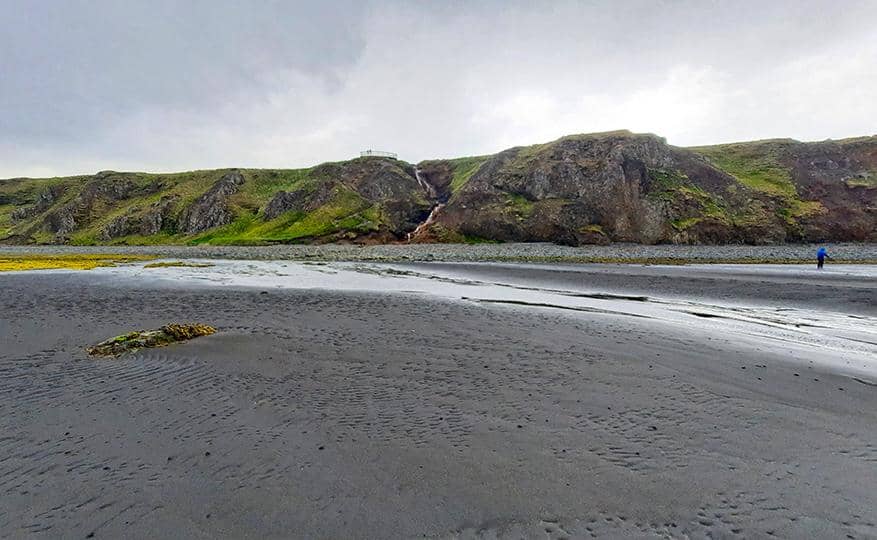
photography by: Omri Westmark
As you stroll around the black-sand beach, a specific angle reveals how ridiculously slender Hvitserkur actually is. With such a large width to length ratio, you can’t help but wonder how this slice of stone managed to withstand the inhospitable conditions for so long.

photography by: Omri Westmark
During the last decades, the massive crag became a magnet for professional nature photographers who were drawn to its exceptional shape and setting. The surrounding fluid sand patterns along with the ever-changing illumination and weather conditions provided the perfect backdrop for hundreds of stunning shots, most notably when the northern lights dominate the sky.
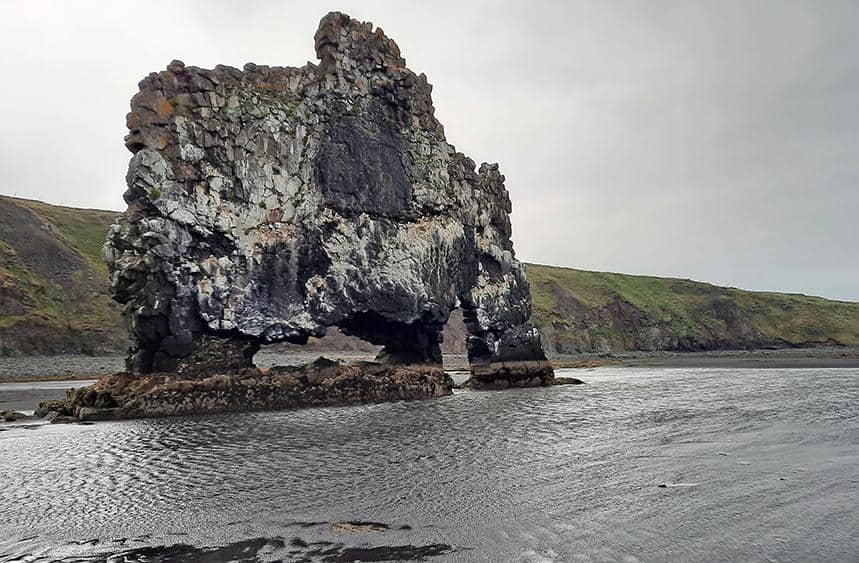
photography by: Omri Westmark
Take note that the weather around the rock tends to be inhospitable during most of the year, as a matter of fact, winds can blow so strong that it if you try leaning backwards against the powerful air current, you’ll most probably won’t fall. Suffice to say that sturdy shoes, a warm clothing and a beanie hat are more than essential even if you only visit for a couple of minutes.

photography by: Omri Westmark
If you get lucky enough you might spot seals roaming around Hvitserkur, as the coastline of Vatnsnes Peninsula is one of the best places to watch those adorable marine mammals. Alternatively, you can supplement your trip with a visit to Borgarvirki, a nearby volcanic plug that formerly functioned as a Viking fortress and is renowned for its columnar formations.
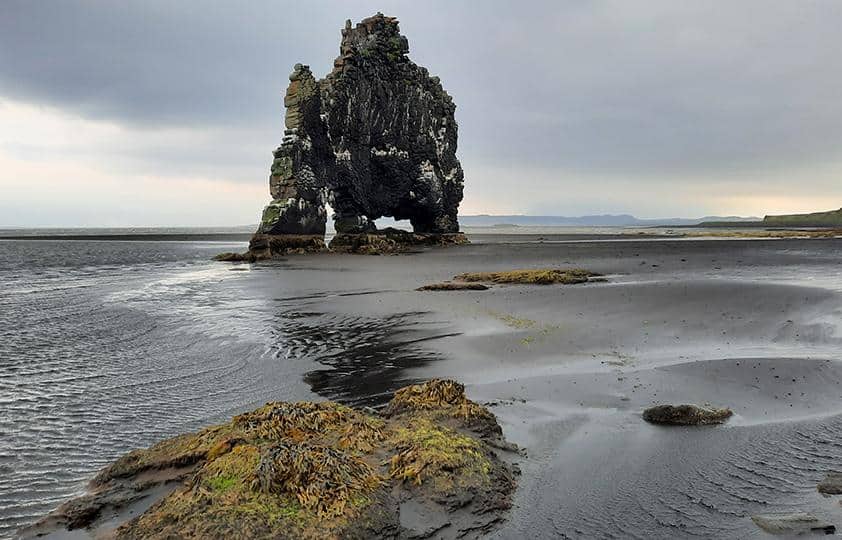
photography by: Omri Westmark